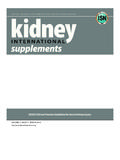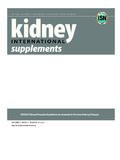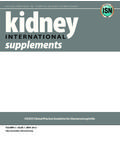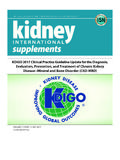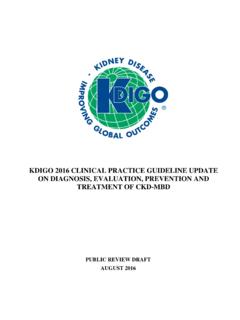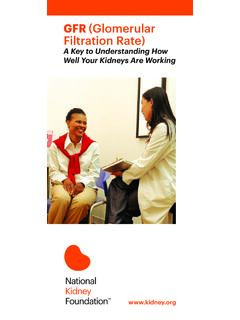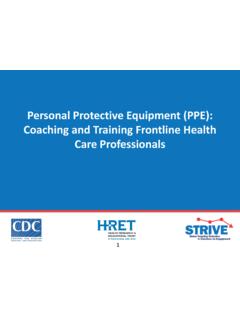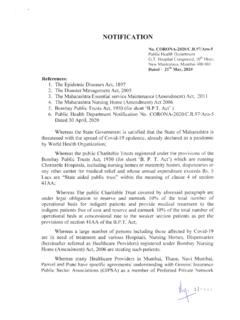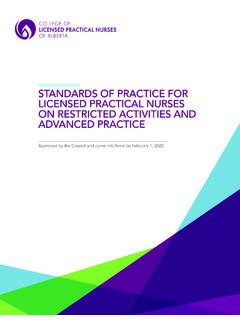Transcription of Drug dosing consideration in patients with acute ... - KDIGO
1 Drug dosing consideration in patients with acute andchronic kidney disease a clinical update fromKidney Disease: Improving Global Outcomes ( KDIGO )Gary R. Matzke1, George R. Aronoff2, Arthur J. Atkinson Jr3, William M. Bennett4, Brian S. Decker5,Kai-Uwe Eckardt6, Thomas Golper7, Darren W. Grabe8, Bertram Kasiske9, Frieder Keller10, Jan T. Kielstein11,Ravindra Mehta12, Bruce A. Mueller13, Deborah A. Pasko14, Franz Schaefer15, Domenic A. Sica16,Lesley A. Inker17, Jason G. Umans18and Patrick Murray191 Virginia Commonwealth University, School of Pharmacy, Richmond, Virginia, USA;2 University of Louisville, Louisville, Kentucky, USA;3 Northwestern University, Chicago, Illinois, USA;4 Legacy Transplant Services, Portland, Oregon, USA;5 Indiana University School ofMedicine, Indianapolis, Indiana, USA;6 University of Erlangen-Nuremberg, Erlangen, Germany;7 Vanderbilt Medical Center, Nashville,Tennessee, USA;8 Albany College of Pharmacy and Health Sciences, Albany, New York, USA.
2 9 Hennepin County Medical Center,Minneapolis, Minnesota, USA;10 Nephrology, Ulm University, Ulm, Germany;11 Medical College of Hannover, Hannover, Germany;12 University of California San Diego, San Diego, California, USA;13 University of Michigan-School of Pharmacy, Ann Arbor, Michigan,USA;14 University of Michigan Health System, Ann Arbor, Michigan USA;15 Heidelberg University Hospital, Heidelberg, Germany;16 Virginia Commonwealth University, School of Medicine, Richmond, Virginia, USA;17 Tufts Medical Center, Boston, Massachusetts, USA;18 Georgetown University Medical Center, Washington, DC, USA and19 University College, Dublin School of Medicine and Medical Science,Dublin, IrelandDrug dosage adjustment for patients with acute or chronickidney disease is an accepted standard of practice.
3 Thechallenge is how to accurately estimate a patient s kidneyfunction in both acute and chronic kidney disease anddetermine the influence of renal replacement therapies ondrug disposition. Kidney Disease: Improving GlobalOutcomes ( KDIGO ) held a conference to investigate theseissues and propose recommendations for practitioners,researchers, and those involved in the drug development andregulatory arenas. The conference attendees discussed themajor challenges facing drug dosage adjustment for patientswith kidney disease.
4 In particular, although glomerularfiltration rate is the metric used to guide dose adjustment,kidney disease does affect nonrenal clearances, and this isnot adequately considered in most pharmacokinetic are also inadequate studies in patients receiving allforms of renal replacement therapy and in the pediatricpopulation. The conference generated 37 recommendationsfor clinical practice, 32 recommendations for future researchdirections, and 24 recommendations for regulatory agencies(US Food and Drug Administration and European MedicinesAgency)
5 To enhance the quality of pharmacokinetic andpharmacodynamic information available to KDIGO Conference highlighted the gaps and focusedon crafting paths to the future that will stimulate researchand improve the global outcomes of patients with acute andchronic kidney International(2011)80,1122 1137; ;published online 14 September 2011 KEYWORDS: acute kidney injury (AKI); chronic kidney disease (CKD);continuous renal replacement therapy; drug dosing ; hemodialysis ; pharmaco-kineticsIn May 2010, Kidney Disease: Improving Global Outcomes( KDIGO ) convened a Controversies Conference titled DrugPrescribing in Kidney Disease: Initiative for ImprovedDosing.
6 The conference, attended by 50 international experts,including representatives from the US Food and DrugAdministration (FDA) and the European Medicines Agency(EMA), was designed to explore our understanding of drugdisposition in patients with acute kidney injury (AKI) andchronic kidney disease (CKD), and to propose recommenda-tions for the optimization of pharmacotherapy in the mostcommon clinical practice settings. The plenary sessionpresentations were followed by breakout group discussionsto address four specific issues that the conference planningcommittee considered to be of central importance: (1) effectsof impaired kidney function on drug disposition andresponse, (2) patient assessment for drug dosing , (3)calculating drug doses for patients with AKI and CKD, and(4) drug removal by intermittent and continuous renalreplacement therapies.
7 The breakout group deliberationswere reported to the entire group and a consensus-buildingprocess led to the clinical practice, research, and regulatorypolicy International Society of NephrologyReceived 14 July 2011; accepted 9 August 2011; published online 14 September 2011 Correspondence:Gary R. Matzke, Virginia Commonwealth University,School of Pharmacy, 1112 E Clay Street, Richmond, Virginia 23298, : International(2011)80, 1122 1137recommendations from the conference attendees, which isthe substance of this report.
8 The conference agenda, selectedpresentations, and abstracts of the meeting are available onthe KDIGO website ( ).AKI and CKD can affect multiple organ systems and thesephysiological changes have been associated with profoundalterations in the pharmacokinetics (PK) and the pharma-codynamics (PD) of many ,2 Clinicians must assesskidney function and consider how the kidney function-associated changes in the disposition of drugs and their activeor toxic metabolites will impact the drug therapy needs ofindividual number of patients with AKI and CKD has increaseddramatically in the past 10 ,4 Advances in the treatmentof disease in general have permitted patients to livelonger and many of them develop decreased kidney functionover time.
9 Indeed, kidney function decreases with age,and older patients constitute the most rapidly expandingpatient group with CKD. The introduction of manynovel renal replacement therapies (RRTs) for treating AKIand CKD mandate an understanding of their influence ondrug disposition and response. New hemodialysis (HD)membranes and devices, intermittent, automated andcontinuous peritoneal dialysis, and the development ofcontinuous RRTs necessitate evaluations and in some casesreevaluations of drug transport across biological and is now widely utilized to managechronic conditions by primary care providers.
10 And intensi-vists are frequently faced with the need to individualize theacute care medication needs while not upsetting the patient sdelicate therapeutic balance. CKD patients have poorerhealth outcomes than patients with normal renal functionand the nonoptimization of drug therapy may be one of thecontributing factors that could be addressed if more datawere available and emphasis was focused on its incorporationinto patient care CONTROVERSYThe pharmacokinetic era that began in the 1960s providedmany methods to quantify drug concentrations and tools tocharacterize the influence of multiple factors includingkidney
